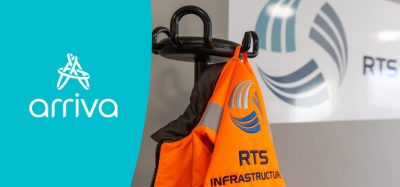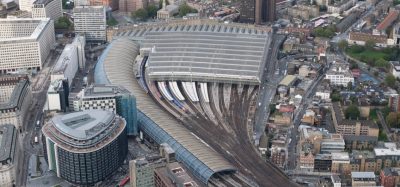AKN – attractive public transport for Northern Germany
Posted: 6 April 2011 | | No comments yet
With 128 years of tradition in railway traffic, AKN Eisenbahn AG looks back on a proud history. Operating 39 double traction wagons, AKN’s service is of utmost importance to ca. 12 million passengers a year, as it opens up metropolitan Hamburg and the interior of Schleswig-Holstein to the public. AKN’s overall rail network extends across the south of Schleswig-Holstein and has a range of 260km.
AKN services a total of 76 train stations in Hamburg and Schleswig-Holstein and has a workforce of 314 in a variety of technical and commercial professions. Since 1998, AKN’s corporate headquarters with a workshop and office building is based in Kaltenkirchen, playing an important role in contributing to the optimisation of traffic flows in the business districts of Hamburg/Schleswig-Holstein.
With 128 years of tradition in railway traffic, AKN Eisenbahn AG looks back on a proud history. Operating 39 double traction wagons, AKN’s service is of utmost importance to ca. 12 million passengers a year, as it opens up metropolitan Hamburg and the interior of Schleswig-Holstein to the public. AKN’s overall rail network extends across the south of Schleswig-Holstein and has a range of 260km. AKN services a total of 76 train stations in Hamburg and Schleswig-Holstein and has a workforce of 314 in a variety of technical and commercial professions. Since 1998, AKN’s corporate headquarters with a workshop and office building is based in Kaltenkirchen, playing an important role in contributing to the optimisation of traffic flows in the business districts of Hamburg/Schleswig-Holstein.
With 128 years of tradition in railway traffic, AKN Eisenbahn AG looks back on a proud history. Operating 39 double traction wagons, AKN’s service is of utmost importance to ca. 12 million passengers a year, as it opens up metropolitan Hamburg and the interior of Schleswig-Holstein to the public. AKN’s overall rail network extends across the south of Schleswig-Holstein and has a range of 260km.
AKN services a total of 76 train stations in Hamburg and Schleswig-Holstein and has a workforce of 314 in a variety of technical and commercial professions. Since 1998, AKN’s corporate headquarters with a workshop and office building is based in Kaltenkirchen, playing an important role in contributing to the optimisation of traffic flows in the business districts of Hamburg/Schleswig-Holstein. Expansions of railway networks for double tracked lines which are currently underway, will increase efficiency and a higher frequency of city railway services to meet the constantly rising number of passengers in the ever expanding metropolitan area around the Hanseatic City of Hamburg. AKN is continuously improving its passenger services. In December 2003, the wholly owned AKN subsidiary SHB Schleswig- Holstein-Bahn GmbH started operating between Neumünster, Heide and Büsum. Since December 2002, AKN also services the reopened line from Neumünster to Bad Oldesloe. AKN was able to win this tender in cooperation with the Hamburger Hochbahn and established the new subsidiary ‘Nordbahn’. At AKN, passenger comfort is inextricably linked to public transport and the proof is the new double traction vehicles and the new, recently built train stations.
On two tracks into the future
Supported by its two main shareholders, The City of Hamburg and the State of Schleswig- Holstein, construction started in 1996 for the double-track expansion of the AKN line between Kaltenkirchen and Hamburg-Eidelstedt. The complete project is being constructed in three phases. The first phase between Ulzburg Süd and Kaltenkirchen Süd was opened in June 2001. In May 2001 the second phase between Hamburg-Eidelstedt and Hamburg-Schnelsen started and was finished in Q3 2004. The third construction phase between Hamburg- Schnelsen (Halstenbeker Straße) and Quickborn, is currently being developed and already showing substantial progress with the doubletrack system between Bönningstedt and Hasloh.
With financial contributions by the Federal Government, the State of Schleswig-Holstein, the administrative district of Segeberg, the city of Kaltenkirchen and the municipality of Henstedt-Ulzburg, AKN was able to realise the first construction phase at a cost of approximately €83.7 million. Two goals were thereby achieved: the connecting station for line A1 with line A3 could be completely refurbished under ground. The modern design increased the attractiveness of the station and the connection between rail and road was realised by adding a bus station, a Park & Ride facility as well as a Bike & Ride area.
By moving the rail tracks under ground, the city centre of Henstedt-Ulzburg was relieved from the negative impacts of the railway tracks crossing the city centre. The main part is a tunnel 630m-long below the city centre. It is the longest railway tunnel in the State of Schleswig-Holstein, which allowed for an attractive remodelling of the city centre. At the same time, seven railway crossings could be eliminated. This project was the largest construction measure in the history of AKN since 1916 and at times even the largest construction site in Schleswig-Holstein.
The second construction phase between Eidelstedt and Schnelsen was started directly after the termination of the first phase. The Federal Government and the City of Hamburg financed the €66 million for this 3.2km section. The result is a win-win situation for all parties involved: AKN could increase the number of trains and improve security; passengers and citizens of Eidelstedt do not see AKN as a synonym for traffic backups and waiting times at closed railroad crossings any more.
The AKN tracks within Eidelstedt were moved under ground in order to eliminate the mutual interference of rail and street traffic. The trains now pass three streets within the city limits in a track pan 600m-long. At the same time, the newly constructed train station Eidelstedt Zentrum was moved closer to the Eidelstedt shopping mall. The side platforms are comfortably accessible by elevators.
In October 2007, the first part of the third construction phase from Schnelsen to Quickborn started operation on two tracks between Bönningstedt and Hasloh after only one year of construction. More flexibility for the two remaining parts of the third construction phase between Hasloh and Quickborn Süd (to be finished in Spring 2011) as well as between Hamburg Schnelsen (Halstenbeker Straße) and Bönningstedt could be achieved. After the completion of the third construction phase in 2013, AKN trains will be able to commute between Eidelstedt and Quickborn on doubletrack. Overall costs for this third phase are estimated at €39 million.
Another important improvement regarding the rail traffic routing was achieved at Eidelstedt station. In the past, incoming AKN trains had to cross the track of the regional S-Bahn. This resulted in mutual interferences and caused unintentional delays.
The construction of the new rail routing was started in autumn of 2004. The rails south of the bridge at Elbgaustrasse were lowered and now the trains do not cross both S-Bahn rails but pass underneath one rail and filter in between the two rails thereafter. Just before the bridge ‘Nördliche Güterumgehungsbahn’ all trains are back on the same level. Construction ended in the summer of 2006. AKN and S-Bahn trains now enter Eidelstedt station without any interference.
New goals for our network
An important step to improve the com – petitiveness of AKN was the implementation of fixed cycle operation and the integration into the Hamburger Verkehrsverbund (HVV). Upon timetable change in May 1989, AKN could improve its service on the route between Hamburg-Eidelstedt-Neumünster and passengers since then appreciate an increasing number of connections without having to change trains between the Northern and Southern part. Since January 1990, the frequency of AKN trains on line A1 between Eidelstedt and Kaltenkirchen was increased all day to a 20 minute interval. On the route from Quickborn to Eidelstedt the frequency was additionally increased to a 10 minute interval.
Doubling our services offered resulted in an increase in passengers and for marketing reasons line A1 was named ‘Rapid Train’ within the HVV. The ‘Rapid Train’ service led to further increasing number of passengers in the following years so that the limits of train capacity were reached for the first time in the history of AKN.
Cities and municipalities along line A1, as well as HVV, urged AKN to improve its services. They wanted to increase mobility of their citizens and HVV wanted to attract more passengers from beyond the Northern limits of the City of Hamburg. The number of AKN passengers had already increased between 1984 and 1988 from 3.4 to 3.8 million, before the improvement of the frequency of trains. This showed that the right path was chosen.
Another measure to meet the expectations of our passengers was the continuous modernisation of the rail cars type VTE which were purchased in 1976 and 1977. In 1993, AKN acquired up-to-date VTA railcars (diesel railcars with asynchronous traction engine) manufactured by Hofmann-Busch (LHB) and ABB Henschel. Eighteen of these traction cars, marking another step of innovation, were delivered to AKN between March and October 1993, each at a price of approximately €2 million.
Reliable and safer, environmentallyfriendlier, more comfortable and more efficient – the new traction cars fulfilled all these requirements and they could also easily be connected to the existing VTE fleet. The new cars improved the service on the rapid line A1, replaced the rail buses on line A2 (formerly Alsternordbahn) and were also used at the beginning on the line between Neumünster and Heide. Since then, the VTE cars have been used on line A3 (formerly EBO-Eisenbahn).
Track development of AKN’s rail network
Alsternordbahn GmbH (ANB), which was merged into AKN in 1981, as well as Elmshorn-Barmstedt-Oldesloer Eisenbahn AG (EBO) are part of HVV since December 1966. Since May 1983, they have been operated as line A2 and A3 and in 1992 the route between Garstedt and Ulzburg Süd (former ANB) was sold to Verkehrsgesellschaft Norderstedt mbH (VGN). It was adjusted to the AKN standard. VGN acquired traction cars type VTA which are used on this route.
Thanks to the modification of the tracks, line A2 has new features: the U-Bahn has a doubletrack up to Norderstedt Mitte where it ends underground. Line A2 has a double-track up to Moorbekhalle station and ends after another kilometre on one track at Norderstedt Mitte on a dead-end track. The U-Bahn trains stop at the same platform. The track from Norderstedt Mitte to Ulzburg Süd has a length of 7.6km and AKN takes care of operation and maintenance.
The very convenient connection of AKN line A2 to U-Bahn line U1 of the Hamburg rapid train network quickly led to an increase in passenger numbers. The excellent transfer connection at Norderstedt Mitte to U-Bahn line U1 with the ‘Spanish solution’ (passengers exit the incoming train either to the left or right to their connecting trains, depending on the direction they want to continue) for the platforms has significantly contributed to this success.
Due to low passenger numbers, the EBO line at the Hamburg city limit was only operated as rapid line A3 between Elmshorn and Barmstedt from 1973 until May 1992. The AKN manage – ment also decided to preserve the remaining section from Barmstedt to Henstedt-Ulzburg, as this would avoid uneconomic commuting detours for the passengers. After the modification, which started in 1990, this section restarted operation in 1992 on 24.4km from Elmshorn to Henstedt-Ulzburg and since then attracts a continuously increasing number of passengers. The connection to the regional train network of Deutsche Bahn at Elmshorn increases the importance of this route. In today’s core network of AKN, lines A1, A2 and A3 are interconnected at Ulzburg-Süd station.
After completion of the double-track extension of the routes and the ‘construction site Kaltenkirchen’ AKN immediately increased the frequency of trains upon change to the timetable 2005/2006. Furthermore, as of December 2005, line A2 was prolonged beyond Henstedt-Ulzburg up to Kaltenkirchen Mittelzentrum during rush hours.
Since December 2009, AKN services on the routes Eidelstedt to Kaltenkirchen (A1) and Ulzburg Süd to Norderstedt Mitte (A2) has been doubled to a 20 minute interval in the evening hours in order to shorten transfer and offer easily memorable departure times. Above all, AKN follows the maxim: you’ve got the right connection!
OUT NOW: The Definitive Guide to Rail’s Digital Future
The rail industry is undergoing a digital revolution, and you need to be ready. We have released our latest market report, “Track Insight: Digitalisation.”
This is not just another report; it’s your comprehensive guide to understanding and leveraging the profound technological shifts reshaping our industry. We move beyond the buzzwords to show you the tangible realities of AI, IoT, and advanced data analytics in rail.
Discover how to:
- Optimise operations and maintenance with real-time insights.
- Enhance passenger services through seamless, high-speed connectivity.
- Leverage technologies like LEO satellites to improve safety and efficiency.
Featuring expert analysis from leaders at Nomad Digital, Lucchini RS, Bentley Systems and more, this is a must-read for any rail professional.







